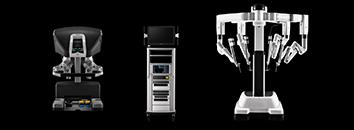Department of Orthopaedics and Joint Replacement

The Institute of Orthopaedics at Gleneagles Hospital, Lakdi-ka-pul, Hyderabad deals with the treatment of bone problems. We are the best Orthopaedic hospital in Hyderabad and we provide you with the best treatment for your bone problems with our advanced technologies and best medical facilities.
Joint replacement surgery is recommended for patients experiencing severe pain due to progressive arthritis. We perform joint replacement surgery when a replacement of hips or joints is needed and that may involve the complete removal of the damaged joint and is replaced with a prosthetic counterpart. The aim of this surgery is to restore mobility in the patient.
Our Orthopaedics department deals with the diseases and injuries of the musculoskeletal system of the body and gives the best treatment for it and that makes us one of the best hospitals for Orthopaedic and joint replacement in Hyderabad. Our department of Orthopaedics does advanced joint replacement surgery and offers the best treatment for bone problems that may include various surgeries such as Fusion, Joint replacements, Osteotomy, Arthroscopy, etc.
The Orthopaedics and Joint Replacement department of our hospital provides comprehensive treatment for all bone and joint problems. We are one of the best hospitals for joint replacement in Hyderabad and have a wide variety of diagnostics that we provide to our patients. Being one of the best Orthopaedic hospitals in Hyderabad, we provide the highest level of patient care with professional expertise to our patients.
Some methods for the diagnosis of Orthopaedic conditions are:
Arthrography
Arthrography is a type of imaging done by way of an X-ray of the joints. The joints to be examined can be of knees, shoulders, wrists, elbows or even jaws. Computed tomography (CT) scanning, magnetic resonance imaging (MRI) or fluoroscopy may be performed after arthrography to image the joint.
Bone scans
A bone scan is an imaging test used to help diagnose problems with bone metabolism. It safely uses a minimal amount of radiopharmaceutical, which is referred to as a “dye” but does not stain your bones. It can also be used to determine if cancer has spread from the bone to other parts of the body.
Discography
It uses imaging guidance to inject contrast material into the centre of one or more spinal discs to help identify the source of back pain directly. It also is used to help guide the Orthopaedic Surgeon to determine the suspect disc before surgery.
Doppler Ultrasound
A Doppler ultrasound is a test that uses high-frequency sound waves to measure the amount of blood flow to your arms and legs by bouncing off high-frequency sound waves against red blood cells. It is a non-invasive, pain-free procedure that can reveal blocked arteries early on in the patient.
Dual Energy X-ray Absorptiometry
Dual-energy X-ray Absorptiometry (DEXA) uses a minimal dose of ionizing radiation to produce pictures of the inside of the body to measure bone loss. It is commonly used to diagnose osteoporosis. DEXA is simple, quick, and non-invasive.
Electromyography
Electromyography (EMG) is a diagnostic procedure that analyses the health condition of muscles. An EMG translates the electric nerve signals into graphs, helping doctors to make a diagnosis.
Flexibility Test
Flexibility tests are used to measure the range of motion in the patient and are often part of the physical examination. They are used to help determine whether you have arthritis in a joint. It is a minimally invasive, painless procedure.
Peripheral Bone Density
A bone density test determines if you have Osteoporosis — a disorder characterized by bones that are more fragile and more likely to break. The test uses X-rays to measure the amount of calcium and other bone minerals in a segment of bone. Doctors use bone density testing to determine your risk of broken bones (fractures), confirm a diagnosis of osteoporosis, and monitor osteoporosis treatment.
Our Doctors
View all
Dr Siddhartha Maredupaka
Consultant Orthopedic, Joint Replacement Specialist
MBBS, MS - Orthopaedics, FAA (Vienna), FKSM (Korea), FSSM (Seoul)

Dr K Saketh
Consultant
MBBS, MS (Ortho), FHKS & FSS (Singapore)
We have been developing and evolving ourselves according to the needs of our patients and giving them the best that we can for the treatment of bone problems, joint replacements, and Orthopaedic problems. We keep updating our technologies and medical facilities so that we can provide them with the best cure possible.
The Department of Orthopaedic and Joint Replacement ushers top Orthopaedic doctors at Gleneagles Hospital, Hyderabad, and provides you with the best treatment for your bone problems and joint replacements as we have some of the best medical staff onboard. We have some of the best Orthopaedic surgeons and the top Orthopaedic doctors in Hyderabad on board will provide you with all the necessary medical assistance. They are well-trained and have great knowledge about their area of specialisation. We are one of the best hospitals for Orthopaedics in Hyderabad and we make sure our patients have a very satisfactory journey to recovery.
- What is an Orthopaedic department?
Gleneagles Hospital, Lakdi-ka-pul, Hyderabad are one of the best Orthopaedic hospitals in Hyderabad they provide you with the best treatment for your bone problems with their advanced technologies and best medical facilities.
- What are all treatments and surgeries provided at our Department?
The Department of Orthopaedics does advanced joint replacement surgery. It offers the best treatment for bone problems that may include various surgeries such as Fusion, Joint replacements, Osteotomy, Arthroscopy, etc.
- What is Osteoarthritis?
Osteoarthritis is a joint disease that affects the cartilage, a shock-absorbing tissue located at the end of joints. In this condition, some of the bones may break or wear away, leading to bone-to-bone friction. This causes swelling, pain, and a reduction in joint motion. Treatment typically involves a combination of exercise, weight loss, rest, and medications for pain and inflammation, all of which will be provided by our medical team.
FAQ
Why Choose Us
-
PATIENT EXPERIENCE
Your care and comfort are our top priorities. We ensure that the patients are well informed prior to every step we take for their benefit and that their queries are effectively answered.
-
LATEST TECHNOLOGY
The Gleneagles Hospitals' team stays up to date on the advancements in medical procedures and technologies. Experience the Future Healthcare Technologies now at Gleneagles Hospitals.
-
PROVIDING QUALITY CARE
Strengthening lives through compassionate care, innovative therapies and relentless efforts. It reflects in the DNA of our passionate team of doctors and dedicated clinical staff.










